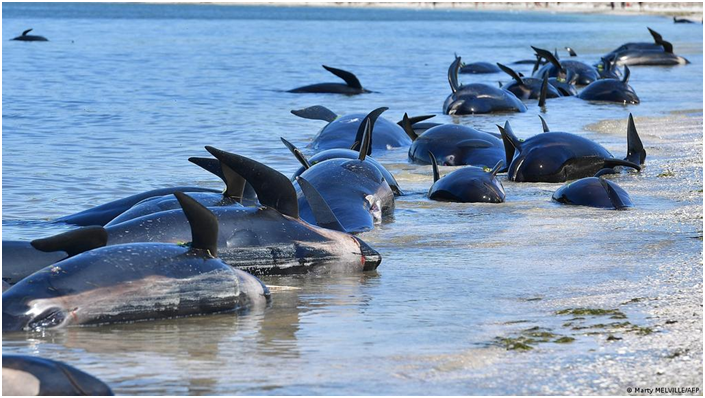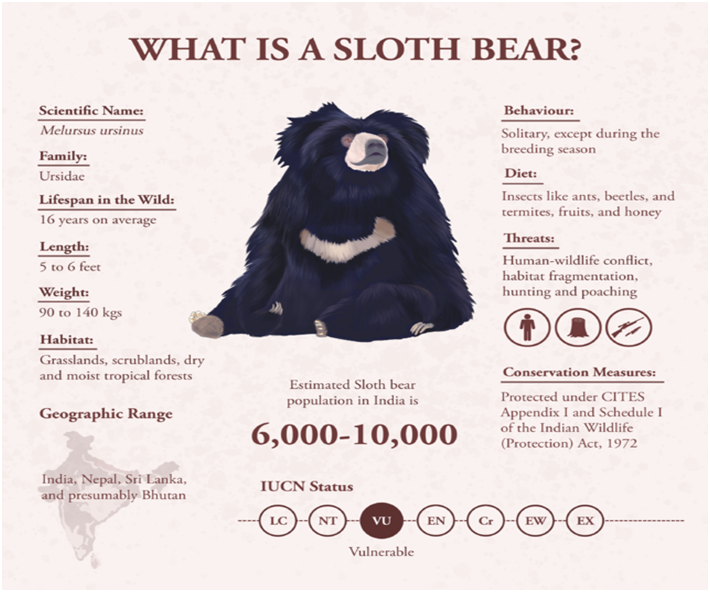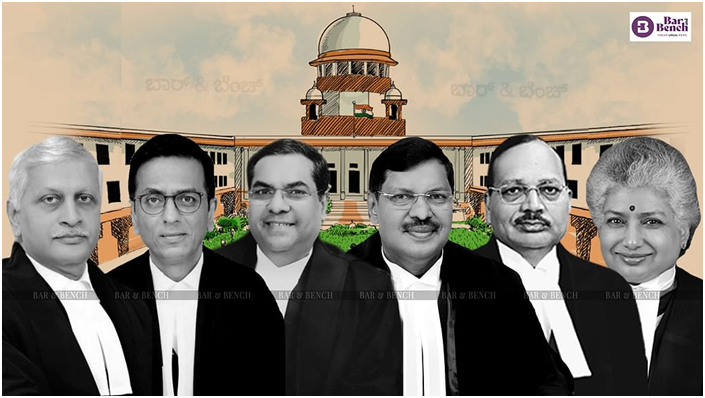No citizen can be prosecuted under scrapped section 66A of IT Act: SC (GS Paper 2, Judiciary)

Why in news?
- Recently, the Supreme Court (SC) directed no citizen can be prosecuted under section 66A of the Information Technology Act, 2000, which it had scrapped way back in 2015.
Background:
- Underlining that liberty of thought and expression is of ‘cardinal’ significance, SC had on March 24, 2015 done away with the provision, saying the public's right to know is directly affected by Section 66A of the Information Technology Act.
- Under the annulled section, a person posting offensive content could be imprisoned for up to three years and also fined.
Key Highlights:
- A bench headed by Chief Justice said in all cases where citizens are facing prosecution for alleged violation of section 66-A of the Act, the reference and reliance upon the said provision shall stand deleted.
- The top court clarified that this direction shall apply only with respect to offence punishable under section 66A, and if in the crime in question, other offences are also alleged, then the reference and reliance upon section 66A alone shall be deleted.
Concerns:
- The bench observed the counsel appearing for the Centre has placed on record an all-India status report with regard to pending cases under section 66A.
- It observed the information given in a tabular form does suggest that despite the issue regarding the validity of section 66A of the Act having been decided by the apex court, a number of criminal proceedings still rely upon this provision and citizens are still facing prosecution.
- The bench also said whenever any publication, whether government, semi-government and private, about the IT Act is published and section 66A is quoted as part of the statute book, the reader must adequately be informed that section 66A has already been pronounced upon by the apex court to be violative of the Constitution.
- Calling a "matter of serious concern" the registration of FIRs under section 66A of the Act which was scrapped in 2015, the apex court had recently asked the chief secretaries of the states concerned to take back the cases within three weeks.
What was the case before SC?
- The bench was hearing a miscellaneous application of NGO 'People's Union for Civil Liberties' (PUCL) alleging prosecution of people under the scrapped provision.
- The NGO claimed that despite express directions of the court in 2019 that all state governments sensitise police personnel about the March 24, 2015 judgement, thousands of cases have been registered under the section.
Singhal v. Union of India:
- The Supreme Court of India initially issued an interim measure in Singhal v. Union of India, (2013) prohibiting any arrest pursuant to Section 66A unless such arrest is approved by senior police officers.
- On February 15, 2019, the top court had directed all state governments to sensitise their police personnel about its March 24, 2015 verdict, which had scrapped section 66A of the Act, so people are not unnecessarily arrested under the struck-down provision.
- The first PIL on the issue was filed in 2012 by law student Shreya Singhal who sought an amendment to section 66A of the Act after two girls - ShaheenDhada and RinuShrinivasan - were arrested in Palghar in Maharashtra's Thane district.
- While one had posted a comment against the shutdown in Mumbai following Shiv Sena leader Bal Thackeray's death, the other had 'liked' it.
- PUCL was also one of the petitioners in the earlier case and had challenged the constitutional validity of Section 66A of the Act.
Mass Stranding on New Zealand islands
(GS Paper 3, Environment)
Why in news?
- Nearly 500 pilot whales have died after beaching on New Zealand’s remote Chatham Islands in two mass strandings over the weekend.

Details:
- As many as 250 pilot whales were found beached at Chatham Island, 840 kilometers east of the main South Island and three days later another 240 whales came ashore on Pitt Island.
- The stranded whales had to be euthanised as the Chatham Islands is far from the New Zealand mainland which makes it ‘almost impossible’ for rescue teams to reach in short notice.
- The conservation department does not try to refloat whales in the area due to the risk of shark attack to both humans and whales
What are mass strandings?
- When marine animals such as whales and dolphins wash ashore, the phenomenon is described as beaching or stranding.
- The most frequent mass strandings are visible in pilot whales.
- The other species that usually beach themselves include false killer whales, melon-headed whales, Cuvier’s beaked whales and sperm whales.
- All of these normally live in waters over 1,000 metres deep and are very social, forming cohesive groups that in some cases may number hundreds of animals.
Why does Whale Beaching happen?
- Whale beaching is one of the most mysterious events in marine science, which is yet to be decoded by marine biologists.
- Scientists speculate that the reason could be the sociable nature of whales and dolphins that live in colonies. They travel together in pods, often following a leader, and are known to gather around injured or distressed whales.
- While some suspect it could be a misguided leader of the pack, others speculate a misadventure, where a few animals get themselves into trouble and the rest of the group might follow them.
- Other researchers have also cited changes in electromagnetic fields in the region due to solar flares or seismic activity for the beachings.
- The pilot whales use sophisticated sonar to find prey and for orientation, changes in the electromagnetic field could lead them in the wrong direction and away from the waters.
- Another reason, specific to the island, could be the tides and the shape of the beaches, where if whales or dolphins are caught in the waters, they are bound to be pushed towards the shore and stranded.
- A 2019 research indicates the eating pattern of the whales in the region. The analysis of stomach contents from 114 long-finned pilot whales stranded at four locations around Tasmania between 1992–2006 revealed that they were eating a variety of squid.
- It indicated that the prey could have been closer to shore, drawing a few members towards the beach and the pod followed.
Man-made reasons:
- Human activities may also be a reason for beaching.
- Getting caught in fishing lines is the primary human-made cause of death for cetaceans.
- Noise pollution, including sound pulses from the use of sonar and seismic surveys, interferes with whales’ ability to communicate and navigate and can drive them ashore by deafening, disorienting, or frightening them.
- In May 2000, a beaked whale mass stranding was reported in the Bahamas that coincided with a naval activity using loud mid-frequency sonar.
- During the examination, haemorrhaging, mostly around the inner ear was found in some of these dead whales. Sonar can injure the ears of the whales as sound travels faster through water than air and its intensity is longer.
Some recent mass strandings:
- While the October beaching event has killed over 400 pilot whales, a similar event happened in September when 230 whales were stranded on Tasmania's west coast in Australia.
- Earlier, 14 sperm whales were discovered on King Island, part of the state of Tasmania in the Bass Strait between Melbourne and Tasmania's northern coast.
- The largest mass stranding in modern recorded history happened in 1918 when 1,000 whales were stranded on the shores of the same Chatham Islands where the latest tragedy has happened.
- Whales are a protected species, even once deceased, and it is an offense to interfere with a carcass.
First World Sloth Bear Day
(GS Paper 3, Environment)
Why in news?
- Recently, the first World Sloth Bear Day was observed on 12th October.
- It aims to generate awareness and strengthen conservation efforts around the unique bear species endemic to the Indian subcontinent.

Status on IUCN List:
- Classified as ‘Vulnerable’ on the IUCN Red List, sloth bears are endemic to the Indian sub-continent and 90% of the species population is found in India.
Background:
- A proposal for observing the World Sloth Bear Day was mooted by Wildlife SOS India, an organisation involved in sloth bear conservation and protection for over two decades and the IUCN-Species Survival Commission sloth bear expert team accepted the proposal and declared the day to be celebrated worldwide.
About Sloth bears:
- Sloth bears are identified by their very distinct long, shaggy dark brown or black fur, distinct white V-shaped chest patch and four-inch long ivory-coloured curved claws used for digging out termites and ants from rock-hard mounds.
- The sloth bears were omnivorous and survived on termites, ants and other social insects and fruits.
- They cannot eat meat and by foraging on fruits are the biggest seed dispersals.
- Listed under Schedule I of The (Wildlife Protection) Act of India, 1972 the species has the same level of protection as tigers, rhinos and elephants.
Habitat:
- There were eight species of bears across the world of which four were sloth bear, Himalayan black bear, brown bear and Malayan sun bear.
- The sloth bear ( Melursusursinus) was an important species and endemic to the Indian sub-continent with small populations in Nepal and Srilanka.
- Sloth bears are found in all parts of the country except Jammu and Kashmir and northeastern States. Over the past few years there has been a rise of incidents of human sloth bear conflict in States like Gujarat, Rajasthan and Maharashtra among other states.
Barbaric tradition being resolved:
- The Wildlife SOS has rescued and rehabilitated over hundreds of performing dancing bears, thereby resolving a 400-year-old barbaric tradition (of dancing bears) while also providing alternative livelihoods to the nomadic Kalandar community members.
Principle of seniority and next CJI’ s ‘5+1’ collegium
(GS Paper 2, Judiciary)
Why in news?
- Recently, the Chief Justice of India (CJI) UU Lalit has recommended DY Chandrachud as his successor.
- Chandrachud will be the 50th CJI and hold the top judicial post for two years till November 10, 2024.

Convention:
- According to rules, the retiring CJI names the senior-most judge as successor after recommending their name to the Union Law and Justice Ministry.
- The ministry asks the CJI to name their successor nearly 30 days before their retirement. The outgoing CJI chooses the next CJI based on seniority.
What is the collegium? How does it work?
- The collegium is a group of CJI and the four seniormost judges of the Supreme Court that decides on appointments of judges to the apex court.
- These appointments could be in the form of elevation when High Court judges are appointed to the Supreme Court or direct appointments when experienced lawyers may be directly appointed as Supreme Court judges. The retiring CJI UU Lalit was a direct appointee.
- Like the Supreme Court, High Courts also have a collegium. The chief justice of the court heads them. Two other seniormost judges are part of the HC collegium.
- The high court collegium, however, only sends the recommendation to the Supreme Court collegium on judicial appointments.
- The final decisions are taken by a collegium of the CJI and two seniormost judges of the SC. This collegium of the three senior-most SC judges also decides transfers of HC judges in the country.
- According to Article 124 of the Constitution of India, the appointment of Supreme Court judges should be made by the President after consultation with such judges of the High Courts and the Supreme Court as the President may deem necessary.
- The CJI is to be consulted in all appointments except their own.
Where did the collegium system come from?
The system finds its origins in the three cases called the ‘Judges cases’in India.
- First Judges Case: In S P Gupta v Union of India (1981), a seven-judge Bench gave the Executive the last word on the appointment of judges. Interpreting Articles 124(2) and 217(1) of the Constitution, which deal with the appointments of judges to the SC and the HCs respectively, the SC ruled that the government can disagree with the CJI for “cogent reasons”.
- Second Judges Case: In 1993, a nine-judge Bench examined the correctness of the 1981 verdict, and reversed it. The ruling held that the word “consultation” actually meant “concurrence” of the CJI. It also said that the CJI would make decisions along with two senior-most judges of the court, who would form the collegium.
- Third Judges Case: In 1998, a reference was made by then President K R Narayanan seeking the SC’s opinion in its advisory jurisdiction on whether the primacy given to the CJI on appointments was legally sound. The SC reiterated its decision of 1993, but brought more senior judges to the collegium, increasing its strength from three to five judges.
National Judicial Appointments Commission (NJAC) Act:
- The Centre, however, has not supported the collegium system. According to the government, the current system is not transparent and is to blame for the high number of vacancies in the higher judiciary.
- In 2014, the National Judicial Appointments Commission (NJAC) Act was brought in by the NDA government, which would have accorded a major role to the executive in appointing judges to the higher judiciary.
- But it was struck down by the Supreme Court in 2015, continuing the current Collegium system of judicial appointments. A five-judge bench ruled against NJAC with a four-to-one split. It said the NJAC was against the basic structure of the Constitution.
Who is in the collegium?
- The ruling in the Third Judges Case, which gave legal backing to the current system of appointment of judges and created the collegium of the CJI and four senior-most judges.
- Generally, one or more of the four senior judges in the collegium would be a potential CJI candidate. The next in line is considered important to ensure continuity of decision-making. For example, Justice Chandrachud, the senior-most judge after CJI Lalit, is part of the current collegium.
- Ordinarily, one of the four senior-most puisne Judges of the Supreme Court would succeed the Chief Justice of India, but if the situation should be such that the successor Chief Justice is not one of the four senior-most puisneJudges, he must invariably be made part of the collegium. The Judges to be appointed will function during his term and it is but right that he should have a hand in their selection.
- During Justice Chandrachud’s two-year tenure, the collegium he will head will potentially make as many as 18 recommendations for appointment of judges to the Supreme Court.
- It will be an unusual collegium: instead of five members, it will have six.
- In the two-year tenure of Justice Chandrachud as CJI, a potential CJI candidate is unlikely to be in the collegium until May 2023.
What will the Chandrachud collegium look like?
- On November 9 when he takes over as CJI, Justice Chandrachud’s collegium will also include Justices Sanjay KishanKaul, Abdul Nazeer, K M Joseph and M R Shah.
- This combination will change on January 4, 2023 when Justice Nazeer retires. Then the collegium, apart from (then) CJI Chandrachud, will consist of Justices Kaul, Joseph, Shah, and Ajay Rastogi
- On May 15, 2023, after Justice Shah retires, the collegium will have, besides (then) CJI Chandrachud, Justices Kaul, Joseph, Rastogi, and Sanjiv Khanna.
- Justice Khanna is likely to succeed Justice Chandrachud as CJI on November 11, 2024.
What is a 5+1 collegium?
- Given the order of seniority, a potential CJI will enter the Chandrachud collegium only in May 2023. However, Justice Khanna will be the sixth member of the collegium from November 9, 2022 itself.
- This happened earlier in 2007; when then CJI K G Balakrishnan took the top office, the collegium he headed did not have a potential CJI candidate. Justice S H Kapadia, who was next in line to be CJI, was invited to the collegium as the sixth member.
How do other countries appoint SC judges?
- In the USA, judges of the Federal Court are appointed by the President with the advice and consent of the Senate. There is no set retirement age for judges in the US. They continue to hold the office during "good behaviour".
- In the UK, an independent commission called the Judicial Appointments Commission (JAC) looks after the process of judicial appointments. It has 15 members. Three of these are judges, while 12 are selected through open competition.
- South Africa has a similar 23-member Judicial Services Commission that advises the President to nominate the judges.
In almost all Latin American countries like Argentina and Brazil, the President nominates the judges subject to the approval of the respective Senates.





